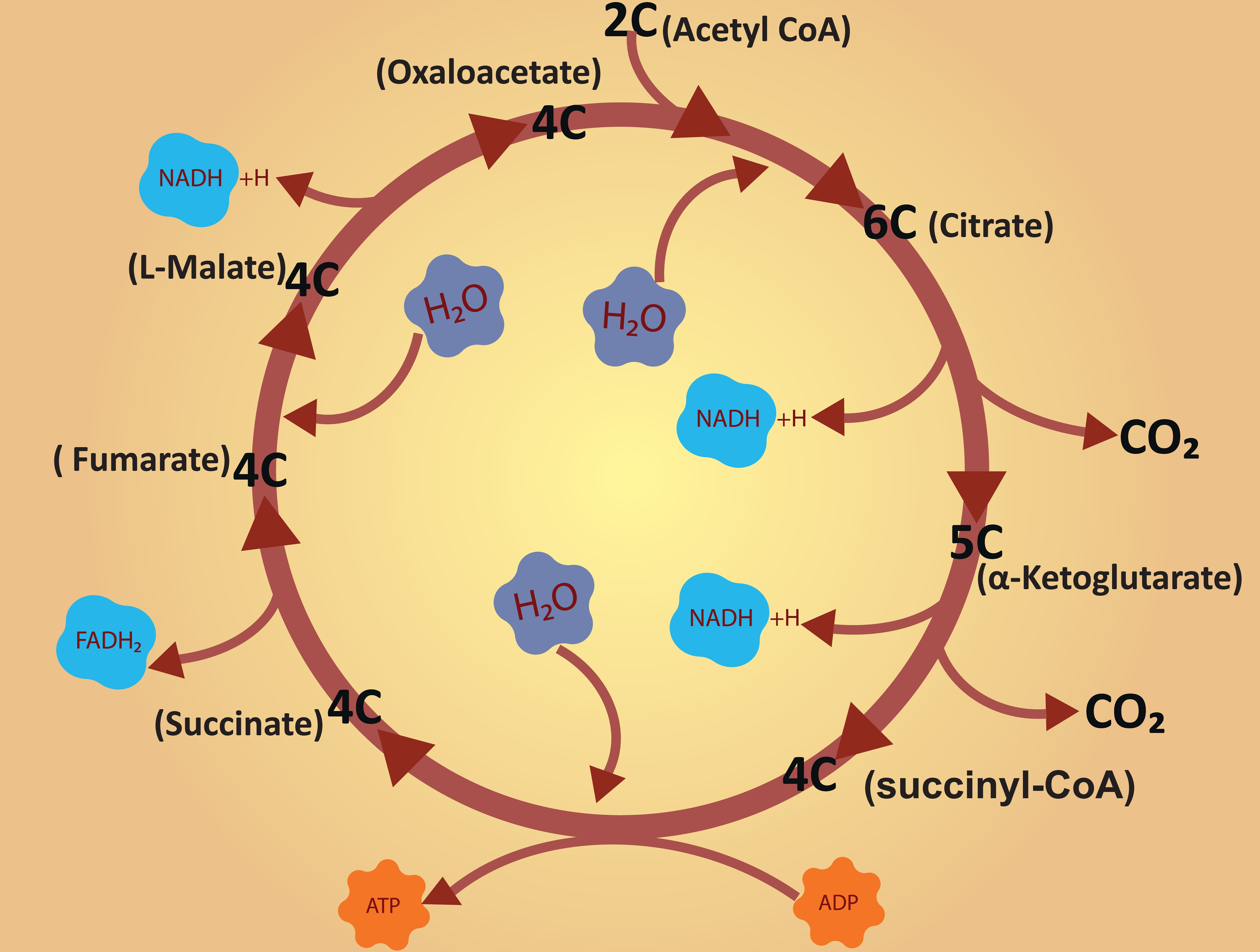Ever heard of the Krebs cycle? How about the citric acid or tricarboxylic acid (TCA) cycle? If the answer’s no, you’re not on your own. The process is essential for keeping us, and all other aerobic organisms, alive, and yet relatively few of us actually know the ins and outs of what it is and how it works. But don’t worry, all that’s about to change…
What is the Krebs cycle?
If you cast your mind back to your school days, you may remember the Krebs cycle from science class. Perhaps you recall something about respiration, energy generation, and the “powerhouse of the cell” mitochondria – and you would be correct.
Named after the first person to propose its existence, Hans Krebs, it is also known as the citric acid cycle or the TCA cycle, and is a series of chemical reactions in the mitochondria that generate energy during aerobic respiration. This occurs through the oxidization of acetate derived from carbohydrates, fats, and proteins into carbon dioxide.
The Krebs cycle is used by all aerobic organisms – organisms that survive and grow only in the presence of oxygen – and is present in every cell that uses oxygen to produce energy.
As we just mentioned, the cycle is a key step in cellular respiration – the process by which organic compounds release energy. When this requires oxygen, it is known as aerobic respiration, which occurs in four stages: glycolysis, the link reaction, our friend the Krebs cycle, and oxidative phosphorylation.
How does the Krebs cycle work?
The Krebs cycle is an eight-step process, which, essentially, converts a molecule called acetyl-CoA into carbon dioxide, in the process producing the energy-carrying nucleotide adenosine triphosphate (ATP).
To kick things off, acetyl-CoA, which has been derived from glucose, fatty acids, or proteins, reacts with a compound composed of four carbon atoms called oxaloacetate. This forms citrate (comprised of six carbon atoms) and releases coenzyme A (CoA-SH). Coenzymes are organic compounds required by many enzymes to help them function.
Then, citrate is rearranged to form isocitrate, before isocitrate loses a molecule of carbon dioxide and undergoes oxidation to form the five-carbon molecule alpha-ketoglutarate (steps two and three). Alongside this, the coenzyme NAD+ is reduced to NADH.
In step four, alpha-ketoglutarate loses a molecule of carbon dioxide and is oxidized, forming succinyl-CoA, which has four carbon atoms. Again, NAD+ is converted to NADH.
Next, succinyl-CoA forms succinate and, at the same time, a molecule called GDP is phosphorylated to get GTP. GTP then transfers its phosphate to ADP, forming the all-important ATP.
We then take succinate (step six) and oxidize it to make fumarate. Meanwhile, FAD is reduced to FADH2.
Adding water to the fumarate creates malate in step seven, and, in the eighth and final step, malate is oxidized to oxaloacetate and the cycle can start again. Malate also loses hydrogen, which is transferred to NAD+ to form NADH.
Overall, therefore, one cycle produces: two molecules of carbon dioxide, one molecule of ATP, three NADH, and one FADH2.
And all of this takes place in the matrix of mitochondria.
It’s a lot to take in, we know – to really get to grips with the intricacies of the cycle, it can help to visualize it:
The Krebs cycle, also known as the citric acid cycle or TCA cycle.
Image credit: hakan.demir/Shutterstock.com
Why is the Krebs cycle important?
Now you know what the cycle is, you may be wondering why you should care about it in the first place. And the answer is ATP.
ATP is an energy-carrying molecule found in the cells of all living things – it drives many processes in living cells, including muscle contraction, ion transport, nerve impulse propagation, and chemical synthesis.
The cycle itself produces a molecule of ATP, but the reduced coenzymes (NADH/FADH2) can also go on to generate even more ATP in something called the electron transport chain.
The Krebs cycle, therefore, provides aerobic organisms with the energy they need to survive. It also plays a role in producing the precursors needed for the synthesis of substances such as amino and fatty acids.
So we guess you could say it’s pretty important – a matter of life or death, even.
All “explainer” articles are confirmed by fact checkers to be correct at time of publishing. Text, images, and links may be edited, removed, or added to at a later date to keep information current.
Source Link: The Life And Death Cycle You Probably Know Nothing About
